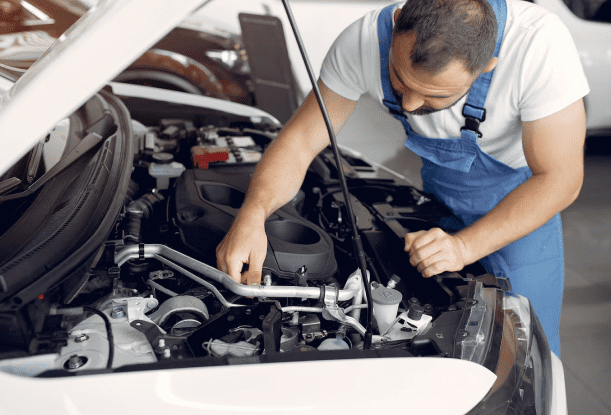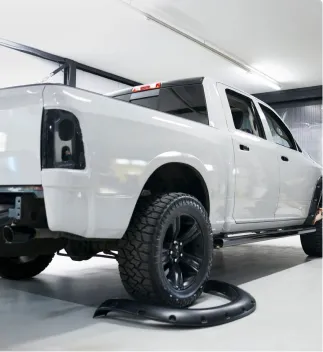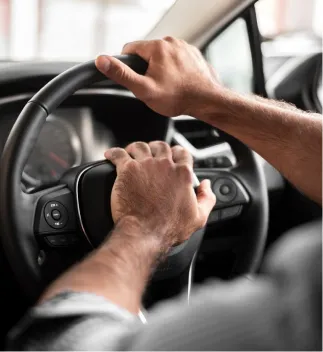LPG Gas tank Testing

LPG Gas Tank Testing in South East Melbourne with Accuracy

We offer services for LPG gas tank testing in South East Melbourne and surrounding suburbs at reasonable prices. It is mandatory to get the LPG gas tank fitted in a vehicle checked once it completes 10 years of use. LPG gas tank testing must be carried out by professional autogas technicians at a well-established LPG service centre.
Our technicians test the LPG gas tank installed in cars and 4Wd vehicles as per the Australian standards. We replace the damaged or worn-out components after the testing process. We have a stock of top-notch components of automotive LPG systems. We stamp the date of inspection on the neck ring of the LPG tanks fitted in the vehicles of our customers to abide by the regulations.
We carry out the following activities for LPG Gas Tank Testing:
We remove the tank in most cases to inspect them properly.
External testing of the autogas cylinder is performed.
Internal inspection of the gas bottle is conducted.
Valve strings and the cylinder neck are checked.
We check the external surface of the LPG cylinder for the signs of damage such as corrosion, dents, scratches, gouges, and nicks. The gas valve has to be removed for checking the internal areas of a gas bottle. During internal LPG gas tank testing, the presence of rust and other types of contamination is checked. We also check whether valve threads are clean and free from cracks and other issues.
Once the testing is completed, we install a new valve and dispose of the old valve in an environment-friendly way. We can accomplish every job of LPG gas tank testing with accuracy as we have up-to-date equipment. We make sure that the integrity of the connection and the structural condition of the LPG system meet the required standards. We can even repaint the external surface of a gas bottle.
Additionally providing LPG conversion and LPG installation guarantees safe integration and effective migrations to LPG systems. Our knowledge in LPG tuning and repairs maximises system performance and fast remedies problems. Our Auto Gas Tune Ups ensure that your LPG-powered car runs fault-free, therefore providing dependability and fuel savings.
Services
A1 LPG
A1 Mechanical


Why LPG Gas Tank Testing in South East Melbourne is necessary?

Inspection or testing of automotive LPG gas tanks in every 10 years is prescribed by the government not only in South East Melbourne but in every area of the country. The LPG cylinder is tested to check whether it has expired or can be used for another 10 years. If the tank passes the inspection, it is degassed and refilled. If the LPG bottle fails the inspection at any stage, it is not tested any further and the customers are advised to get the new tank installed in their vehicle.
Whenever the vehicle owners visit any LPG refilling station, the staff checks the last testing date on the neck of the cylinder to ensure that it is suitable for use. If the last testing date shows that the tank has been checked even after the passing of the expiry date, i.e., it has not been checked for more than 10 years, then the staff at refilling station denies to refill the cylinder.
Moreover, LPG gas tank testing at recommended intervals is important for your safety while you are driving your vehicle on the road. Even though the LPG cylinder should be tested every 10 years, you can opt to get it inspected more frequently. If you observe any usual signs, you must take your vehicle to LPG service centre immediately.
Contact Us For Our Services
Our services for LPG gas tank testing in South East Melbourne and other suburbs are loved by the customers. Want to know why? Dial 0437522193 today!
Testimonials

Our Process
3. Service and Inspection
- • Bring your car in for the scheduled appointment.
- • Our skilled mechanics and LPG experts will perform the inspections and services.
4. Completion and Follow-Up
- • We will go over the finished work and talk about any more advice.
- • You will get a complete invoice along with service summary.
- • Our staff will follow up to guarantee your satisfaction and handle any more queries.
1. Request a Quote
- • Enter details about your automobile and required services via our online form, phone, or email.
- • We will compile the required details to provide you a reasonable estimate.
2. Schedule an Appointment
- • Once you receive the quote, choose a convenient time for the service.
- • Our staff will coordinate with you to minimise disruptions to your daily life.
1. Request a Quote
- • Enter details about your automobile and required services via our online form, phone, or email.
- • We will compile the required details to provide you a reasonable estimate.
2. Schedule an Appointment
- • Once you receive the quote, choose a convenient time for the service.
- • Our staff will coordinate with you to minimise disruptions to your daily life.
3. Service and Inspection
- • Bring your car in for the scheduled appointment.
- • Our skilled mechanics and LPG experts will perform the inspections and services.
4. Completion and Follow-Up
- • We will go over the finished work and talk about any more advice.
- • You will get a complete invoice along with service summary.
- • Our staff will follow up to guarantee your satisfaction and handle any more queries.
Frequently Asked Questions
How do you test a car's LPG tank?
Testing an LPG tank calls for many stages to guarantee its safety and operation:
Look for any leaks, rust, or obvious damage via visual inspection.
Look for leaks around valves, fittings, and connections using a soapy water solution or a gas leak detector.
Make sure the tank can manage the necessary running pressures by doing a pressure test. This usually entails running the tank on a safe gas like nitrogen and looking for pressure retention.
To find structural integrity, the hydrostatic test fills the tank with water and pressures it to a set level. Usually, licenced experts conduct this test.
Look for any leaks, rust, or obvious damage via visual inspection.
Look for leaks around valves, fittings, and connections using a soapy water solution or a gas leak detector.
Make sure the tank can manage the necessary running pressures by doing a pressure test. This usually entails running the tank on a safe gas like nitrogen and looking for pressure retention.
To find structural integrity, the hydrostatic test fills the tank with water and pressures it to a set level. Usually, licenced experts conduct this test.
How do you pressure test a car's gas tank?
Pressing a car’s gas tank follows these guidelines:
Get the tank empty and clean first. Cut all electrical connections and the gasoline lines.
Seal every hole save the one for the air supply and pressure gauge.
Pressurising the tank to the manufacturer’s advised pressure with an air compressor will help you
Watching the pressure gauge will let one determine whether the tank maintains the pressure. Every decline in pressure points to a leak.
Spray over the tank surface and fittings a soap and water mixture. At any leak site, bubbles will develop.
What is the pressure of LPG car tank?
Although temperature affects the pressure within an LPG automobile tank, usually it falls around 100 PSI (pounds per square inch). LPG tanks are made to resist much higher pressures for safety as at higher temperatures the pressure may rise dramatically.
Get in touch
Our Address
116 Wedgewood Rd, Hallam VIC 3803
Our email
service@a1mechanicalhallam.com.au
Call Us
0437 522 193













